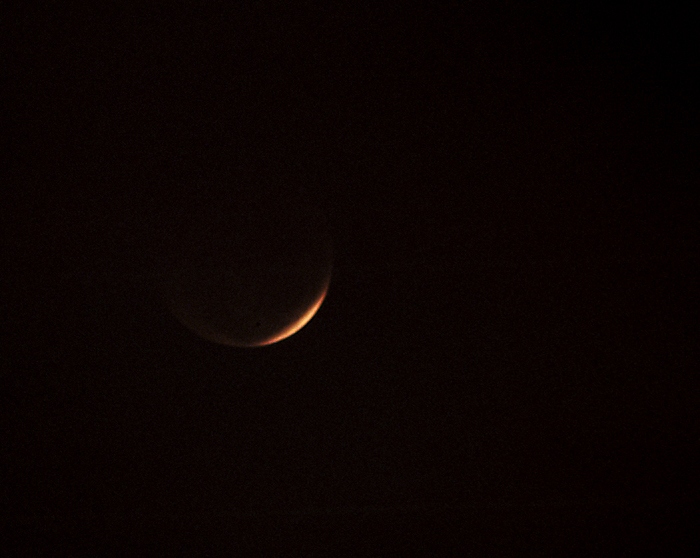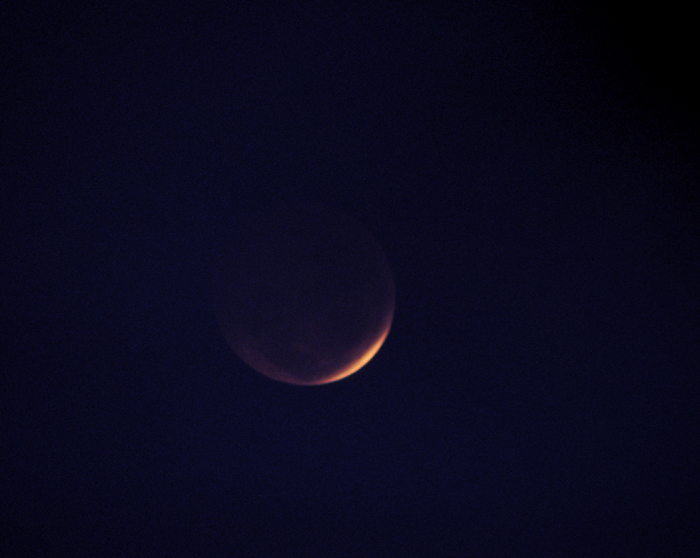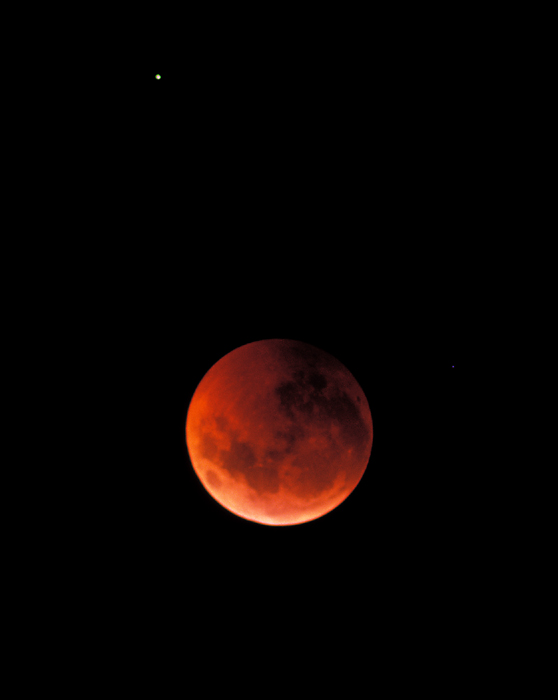
5 seconds exposure, Fuji Provia 400 slide film.
5" f/5 refractor at prime focus.
The first eclipse of the new millenium was on January 9, 2001. From Western Australia, moonset and dawn occured a few minutes after totality ended, so not all of the eclipse was visible. It also meant that observations would start at around 3.00am!!! During the partial stage, I attempted to make crater timings, however government cutbacks to the VNG time signal transmission made accurate timings almost impossible as the short-wave signal was too faint for reliable recording. During totality, I made general observations of the sky and took a number of photographs.

In this eclipse, the Moon passed close to the northern edge of the Earth's shadow. As a result, the southern portion of the Moon was much darker than the northern regions. This is very evident in the above photograph, and the one below.
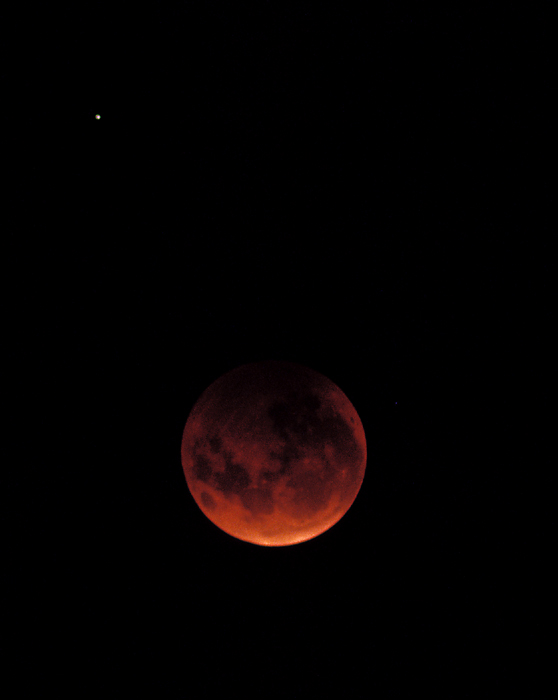
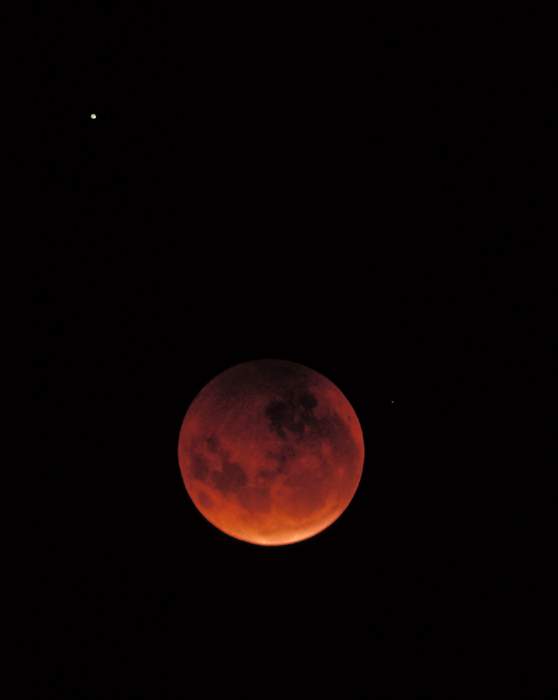
Near mid-totality. The Moon was not particularly dark during this eclipse, except for the south polar regions. (at top) Notice how the Moon has shifted in relation to Wasat and 58 geminorum.
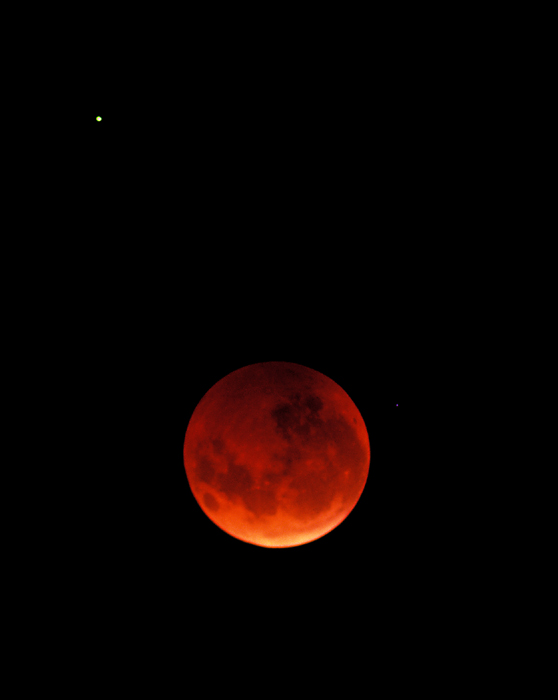
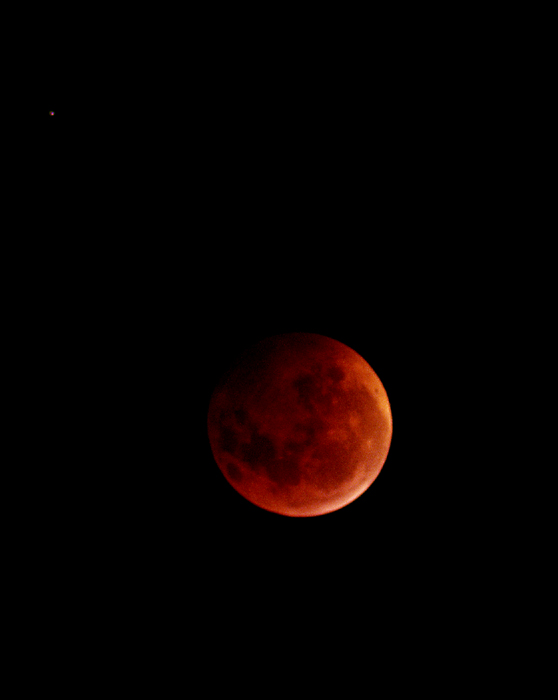
Nearing the end of totality. The north western limb of the Moon is starting to get bright. Notice that 58 geminorum is no longer visible. It has disappeared behind the Moon.
As the Moon started to exit the Earth's shadow, the sky began to brighten and the Moon became very low in the sky. As a result, my final few photographs had a bright bluish background. Also, in the final photograph, the horizon was visible in the frame!
